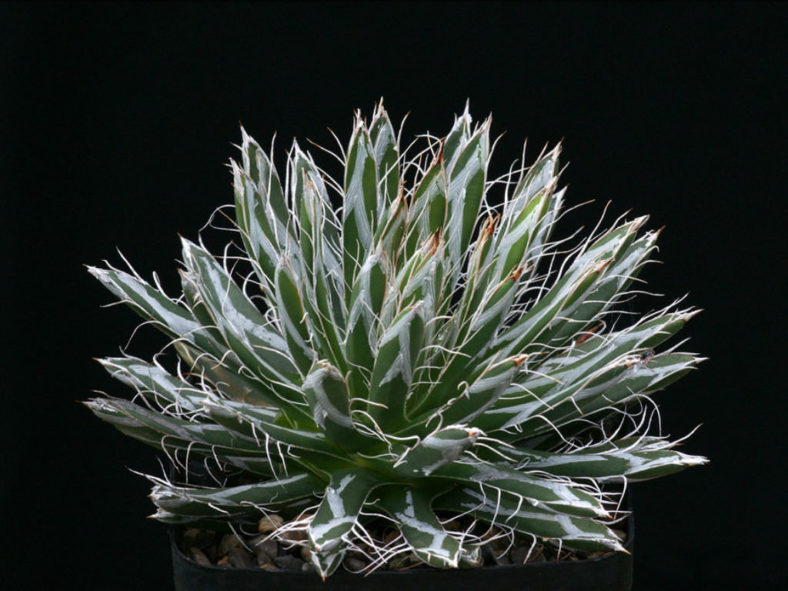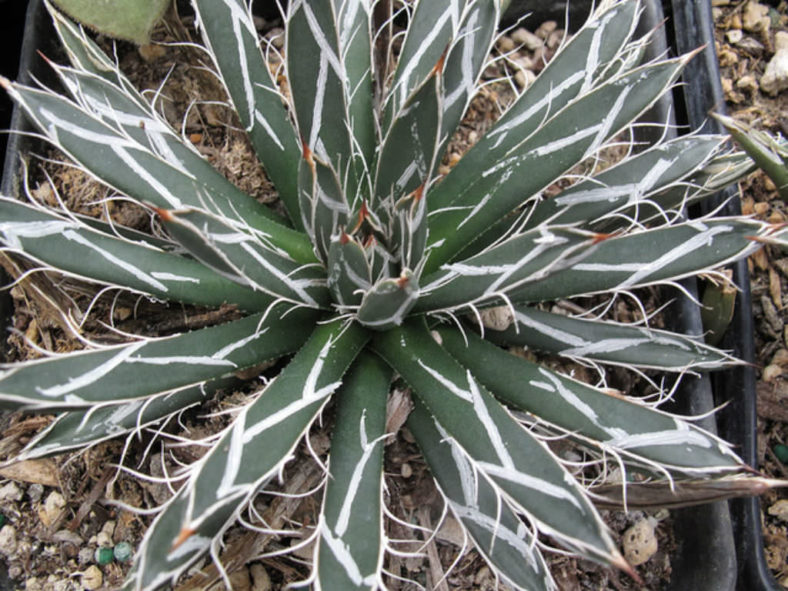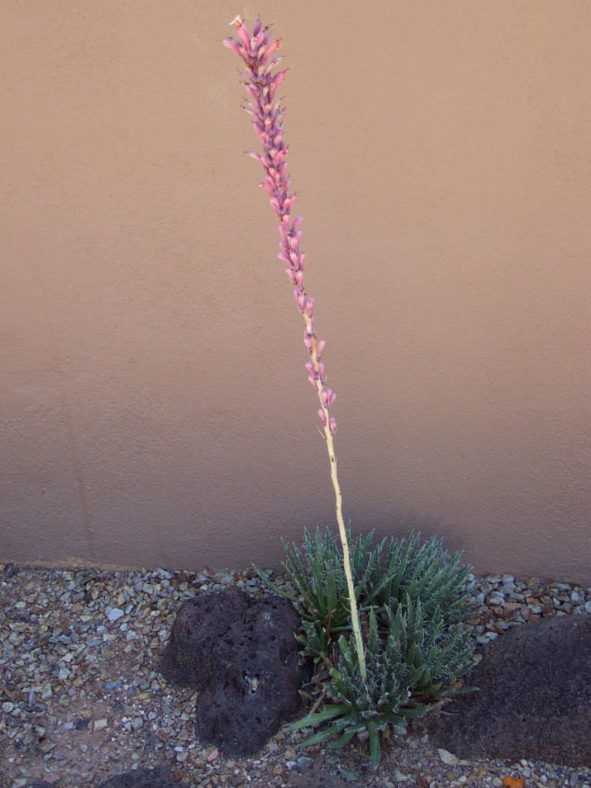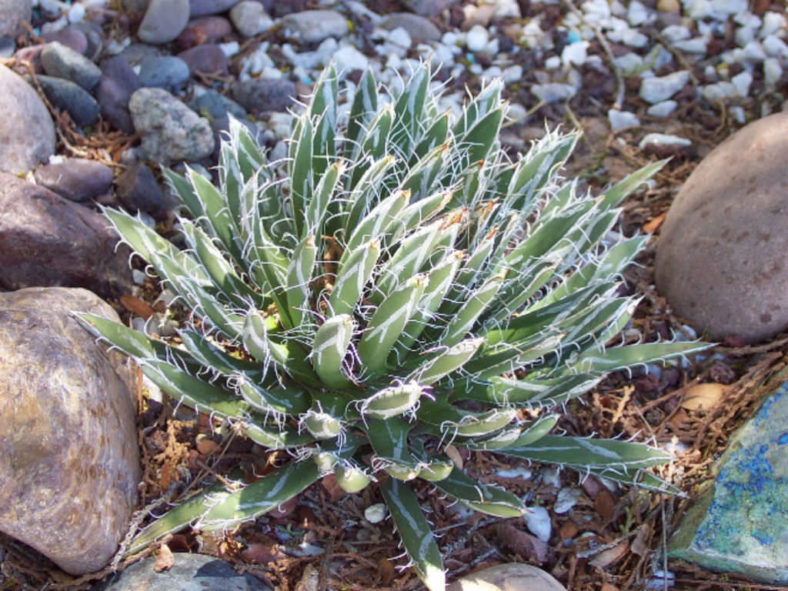Scientific Name
Agave parviflora Torr.
Common Name(s)
Santa Cruz Striped Agave, Smallflower Century Plant, Small-flower Agave, Small-flowered Agave
Synonym(s)
Agave hartmanii, Agave parviflora subsp. parviflora
Scientific Classification
Family: Asparagaceae
Subfamily: Agavoideae
Genus: Agave
Origin
Agave parviflora is native to the United States and Mexico. It grows on rocky slopes of semi-desert grasslands and oak woodlands in southern Arizona and northeastern Sonora at elevations that range from 3,000 to 5,000 feet (900 to 1,520 m).
Description
Agave parviflora is a small succulent that forms a rosette of dark green leaves with a waxy coating, striking white markings on both surfaces, and margins with stiff white curly hairs. The rosette can reach up to 10 inches (25 cm) in height and 8 inches (20 cm) in diameter. The thick, fleshy leaves can grow up to 8 inches (20 cm) long and 0.8 inches (2 cm) wide.
The mature rosette, 10 to 15 years old, sends up a spike-like stalk with tubular, pale yellow or cream-colored flowers. The flower stalk can grow up to 7 feet (2.1 m) tall. The flowers appear in groups of 1 to 4, usually in spring. After blooming, the rosette dies.

Hardiness
USDA hardiness zones 8a to 10b: from 10 °F (−12.2 °C) to 40 °F (+4.4 °C).
How to Grow and Care
Agaves are not difficult plants to grow. They are slow-growing and dramatic and will even thrive on a bit of neglect. If you are the type of person who likes to fuss with houseplants and water a lot, Agave is probably not the plant for you. However, if you are the type of person who likes to set it and forget it, and you have a sunny window, Agave might be the way to go. Be aware that some large varieties will eventually outgrow your room (unless you have a large greenhouse), and Agave can be aggressive. They have irritating sap and sometimes very sharp thorns that can cause injuries to small children and even pets.
In general, Agaves do not need to be repotted every year. Most species commonly found in cultivation grow slowly and take long to outgrow their pot. It is also best to handle your plants as little as possible since they do not like to be disturbed. When you do repot, refresh the spent soil with a new potting mix and make sure the plant is firmly anchored in its pot. However, be careful not to pot the Agave too deep, as that will encourage stem rot during the growing season.
Learn more at How to Grow and Care for Agave.
Links
- Back to genus Agave
- Succupedia: Browse succulents by Scientific Name, Common Name, Genus, Family, USDA Hardiness Zone, Origin, or cacti by Genus
Photo Gallery
Click on a photo to see a larger version.


